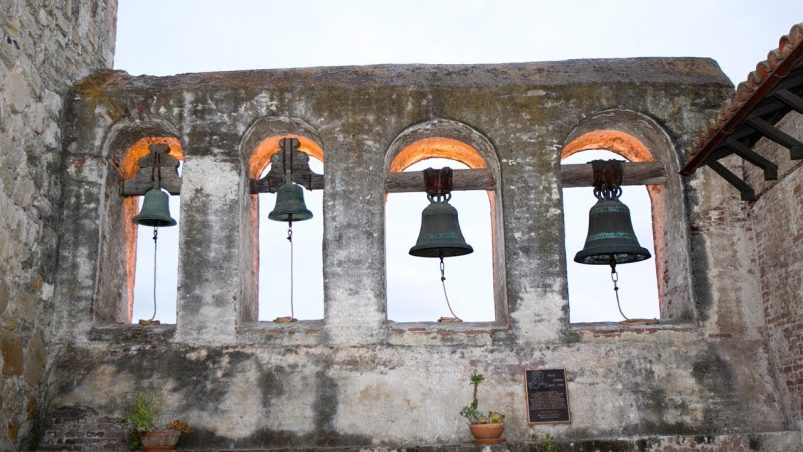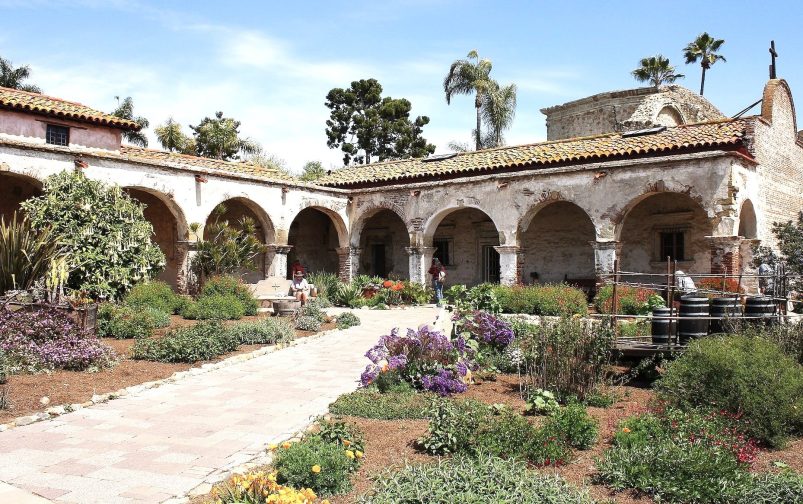The swallows of Capistrano, famous in song and story, really do build their mud nests in the ruins of the old mission church, returning each year on or about March 19, on St. Joseph’s Day. A church of magnificent proportions and most ornate of any other missions once stood here. With a ceiling divided into seven domes, it was nine years in the building but used only six years when it collapsed during an earthquake in 1812. The remaining little chapel is called Fr. Serra’s Church, because it is the only building still standing anywhere in the mission chain in which the Founding Father of California Missions conducted divine services.

The Indian attack that had killed one of the Missionaries at San Diego delayed the founding of Mission San Juan Capistrano for a year, until November 1, 1776. The following year, a long and narrow adobe church was finished. In 1791, a bell tower was completed, and the heavy bells, which had been hanging from a tree all those years, were installed. The mission was so successful that, in 1797, the Franciscan Fathers started building a larger and more elaborate new church. It took nine years to complete. Native stones were used, and the roof consisted of seven concrete domes. Alas, the great church stood only six years before it tumbled to the ground in the earthquake of 1812, killing 40 Indian neophytes.
The discouraged Padres did not attempt to rebuild, instead moving divine services back into their old adobe church. After secularization, mission activities soon grounded to a halt, with Pío Pico’s brother-in-law receiving a good share of Capistrano’s land. For years, the adobe church was used as a storeroom.
In 1922, the secular Priest Father John O’Sullivan rediscovered the little old adobe church. Restoration at San Juan Capistrano had already been in progress since his arrival in 1910. Under his direction, work began on the adobe church, which Father O’Sullivan restored into the beautiful structure seen today. The impressive golden altar is not the original, but is very old and was brought from Spain early in this century. This adobe church is the only building still standing in the California chain where Father Serra is known to have officiated.
A few walls and a single dome of the great stone church survive. Known worldwide as the “home of the swallows”, these little birds return every spring to Capistrano, and their favorite spots for their mud nests are among the stones of the ruined church.
Visitors of today to Mission San Juan Capistrano see a beautiful patina of age on all sides. A campanario, or bell wall, built for the mission bells the year after the earthquake, is still in use. Weathered arches and ancient fountains perpetuate the charm of yesteryears.
